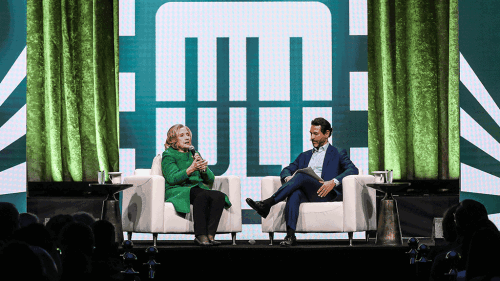Ride-hailing services and autonomous vehicles are already starting to change the economic formulas for transit-oriented development (TOD), a panel of developers and investors said during the 2018 ULI Fall Meeting in Boston.
Public transportation ridership is declining in most major cities, holding negative implications for TOD projects, said David Bragg, managing director of Green Street Advisors, who moderated a discussion on the impact of changing transportation technologies and behaviors on TOD assets.
Though new technologies may not have the predicted impact on transportation, “going forward, we expect the transportation revolution to be a game-changer,” Bragg said.
Developers and investors are already seeing a shift in attitudes toward TOD developments. It is now assumed that assets with high transit scores “will perform better, but that may not be the case,” Bragg said.
“Access to transportation was more important a decade ago than it is today,” largely due to changes in the demographics of the workforce, said Doug Linde, president of Boston Properties. “Creating a place, not just a development next to transit, is growing more critical.”
The emphasis these days is more on walkability than a direct rail or metro connection, said Matt Birenbaum, chief investment officer at AvalonBay Communities, an equity real estate investment trust (REIT). The ability to walk to shops and restaurants can add more value than proximity to a rail link, he said.
The “transit premium” for valuation is decreasing, in part due to the recent surge in TOD construction, Birenbaum said. “There may be more demand, but there is also more supply,” he noted. In emerging markets like Denver, “we’re seeing more value off the transit line,” he said.
Thanks to ride sharing, “you can get to places without being on transit,” said Don Briggs, president of development for UrbanEdge, who agreed that walkability is often more important than transit in the development equation.
Ride-sharing services are already having an impact on transportation planning in cities around the United States. In San Francisco, where ride sharing is widely used, single-occupant car trips have fallen from 82 percent of total trips in 2009 to an estimated 40 percent in 2019, according to Green Street data.
The consequences of ride sharing will affect many aspects of development, across sectors, Bragg said. Two-car households likely will become one-car households, freeing up garage space, he noted. The need for self-storage facilities may also decline, he said. “Low quality” retail may also suffer as driverless vehicles speed the adoption of online services, he said.
Panelists were less certain about the short-term impact of driverless vehicles. Linde said he remains skeptical about the impact of autonomous vehicles in urban areas. Many factors could affect rollout of autonomous vehicles, panelists said. To date, federal regulators have taken a permissive stance, but that could change, Bragg noted.
Parking is another area in which developers and investors are struggling to find the right balance between short- and long-term plans. The ratio of parking spaces to developed space is declining in many markets, but tenants still demand as much parking as possible.
Little catch-up is needed for some office clients, Briggs said. “When you bring suburban tenants in [to an urban area], they don’t believe that employees will use transit,” he said. “You still have a psychological barrier to reducing parking requirements.”
Public agencies are trying to find new ways to deal with parking and transit centers. In New Jersey, the city of Summit is subsidizing Lyft rides to the train station rather than creating a parking lot, Bragg noted.
Public-sector investment in transportation is still crucial, panelists said. “Our perspective is, what’s the alternative?” Linde said. “These are places where population is expanding.”
Even though proximity to a transportation hub may not be the deciding factor, AvalonBay often looks at public investment in transportation infrastructure when it evaluates a market, Birenbaum said. For example, transit projects in Denver may not increase the value of specific projects, but the public investment still drives the market from the company’s perspective, he said.
Asked about the impact of scooter-sharing services on transportation dynamics, Linde said Boston Properties is trying to incorporate parking areas for scooters, but many jurisdictions are still wrestling with regulating the new services, making it difficult to plan for the future.




